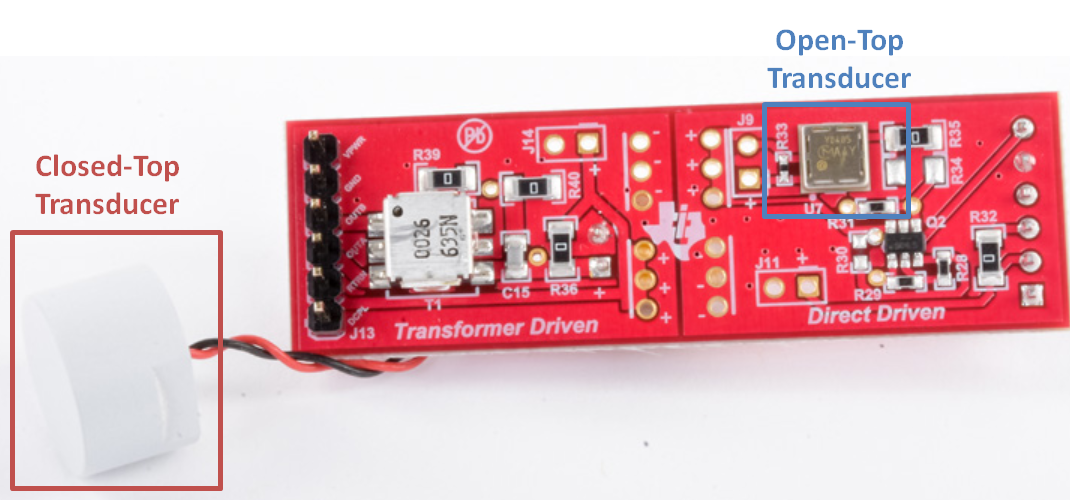SLAA907D September 2019 – December 2021 PGA450-Q1 , PGA460 , PGA460-Q1 , TDC1000 , TDC1000-Q1 , TDC1011 , TDC1011-Q1 , TUSS4440 , TUSS4470
2.3 Transducer Types
Transducers come in two types: closed-top and open-top. Although open-top transducers are lower cost, and require a smaller driving voltage to achieve maximum Sound Pressure Level (SPL), they are unreliable in harsh environments. Exposure to rain, dust, and other contaminants will damage the sensor.
 Figure 2-6 Closed-Top and Open-Top Transducers (From PGA460EVM)
Figure 2-6 Closed-Top and Open-Top Transducers (From PGA460EVM)